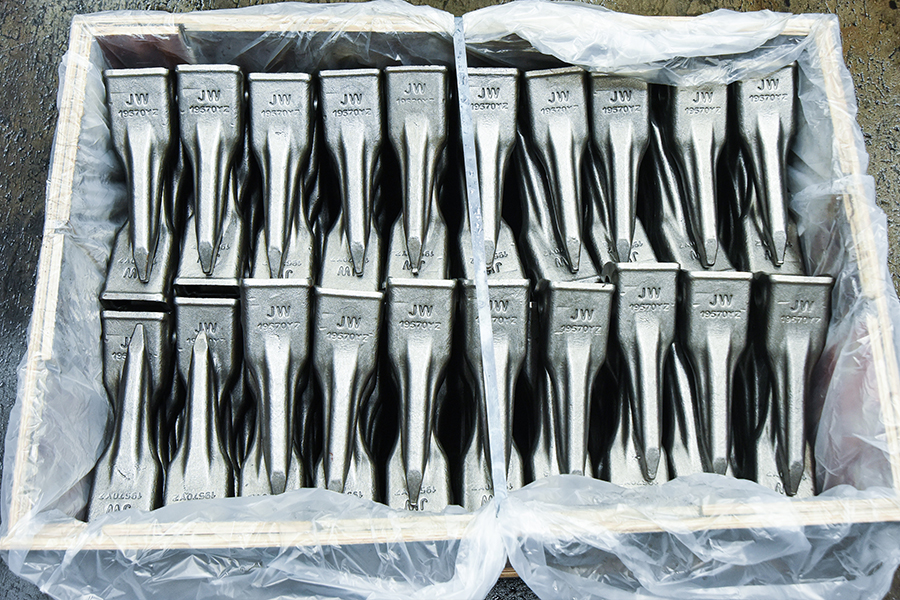Bucket teeth are a critical component in earthmoving machinery. These metal components make contact with the ground and perform the important work of moving dirt, debris, and rocks around the job site via penetration and abrasion. Generally, bucket teeth are made of cast or forged steel. Unlike cast bucket teeth that are formed by pouring molten metal into a mold with a repeating pattern of teeth, forged bucket teeth are produced from special metal billets that undergo a forging process to generate high pressure and temperature extrusion in order to improve the mechanical properties of the resulting bucket tooth. Forged bucket teeth are generally more durable than cast bucket teeth and have a longer service life.
Forged bucket teeth are typically made of a low carbon steel alloy that has a high strength, good impact toughness, and adequate hardness. In addition, a lower carbon content bucket tooth is more cost effective and has less sensitivity to notch stress than a traditional high manganese steel bucket tooth.
The exemplary invention discloses a bucket tooth with a metallurgically bonded wear-resistant coating. The wear-resistant coating is formed on a bottom surface, a top surface that is opposite the bottom surface, and a tip of the bucket tooth. Ideally, the bucket tooth includes a steel body with a decarburized, prefabricated block of wear-resistant material that is fused to the bucket tooth using a dry slurry coating.
Prior to the application of the slurry coating, the bucket tooth is preferably subjected to a pretreatment step such as abrading to remove surface corrosion or other undesired substances. The bucket tooth is then coated with the slurry of fusible, hard metal alloy in an aqueous polyvinyl alcohol matrix and heated to the fusing temperature of the hard metal alloy under a protective atmosphere until the hard metal alloy is fused to the bucket tooth.


 View More
View More
 View More
View More
 View More
View More
 View More
View More
 View More
View More
 View More
View More
 View More
View More
 View More
View More
 View More
View More
 View More
View More
 View More
View More
 View More
View More